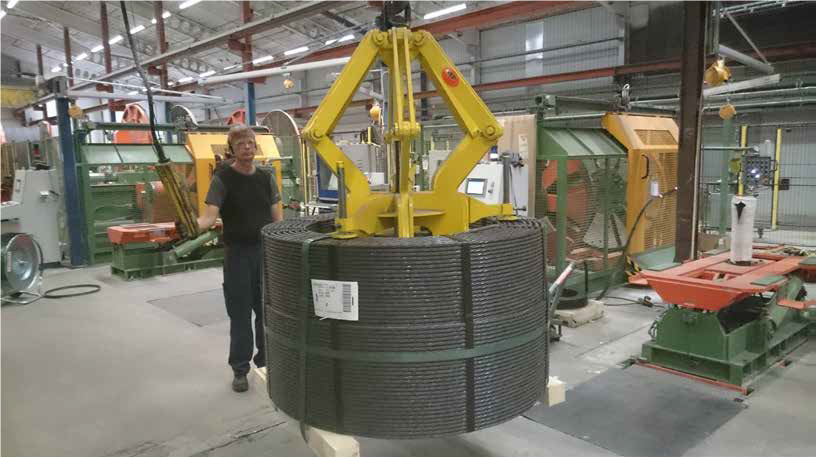ArcelorMittal helps Hjulsbro Steel resist winter
Managing the negative temperatures is a real challenge in the construction industry in Scandinavia. ArcelorMittal Europe – Long Products' mill in Hamburg has been working with Swedish customer Hjulsbro Steel for 5 years, providing them wire rod used to reinforce concrete in low temperatures. Two major bridge projects emerged from our collaboration: the Lysefjord Bridge in Norway and the Öresund Bridge, linking Denmark and Sweden.
Concrete modules: the solution to build at -40°C
Scandinavian cold temperatures can be harmful for construction companies. The lowest temperatures in Finland can go from -20°C to -40°C in the North. Unfortunately, concrete can hardly be processed under 5°C without thermal insulation. To tackle this issue, construction companies use concrete elements. The idea is simple: while in Central and Southern Europe concrete work is carried out directly on the construction site, Scandinavia produces finished concrete parts in special factories all year round, irrespective of adverse external temperatures. These elements are then placed on the construction sites and can be assembled there in any weather.
In order to reinforce these concrete parts, steel strands are used. These stressed and twisted steel strands are made from three to seven high-strength steel wires to reinforce the concrete elements to the desired strength. "In Scandinavia, shopping centres, supermarkets and office buildings are now mainly built using concrete elements", explains Arto Mustonen, Managing Director of Hjulsbro Steel.
From Hamburg to the Baltic states
Since 2012 Hjulsbro Steel has bought from ArcelorMittal a substantial part of the 30,000 tonnes of steel wire rod that is processed in its plant every year. ArcelorMittal operates its own warehouse in Sweden, in Norrköping, which is directly supplied from Hamburg and can deliver Hjulsbro Steel.
ArcelorMittal Hamburg produces wire rod with a high carbon content and a diameter of 8.5 to 12 millimetres. Hjulsbro Steel processes these wires and draws them to 3 to 5 millimetres in diameter to create steel cables of 6.5 to 15.7 millimetres in diameter, which are mainly used for the reinforcement of concrete elements. This technique has many advantages; the steel strand which are stretched during the production of the module and then recombined in the finished concrete part help to increase its strength. This means larger spans, ceilings and walls built significantly thinner with the same strength and no concrete work on the construction site.
"Building with reinforced concrete elements is a growing market," says Arto Mustonen. "The construction industry is very conservative and it takes a long time to develop new processes that could be expanded to other European countries."
Flexibility and quality ensuring a strong partnership
Mustonen appreciates the great flexibility that is given to him in the delivery of steel, and of course, the high quality of our steel. "Our products are subject to strict controls by the national authorities in each country, which precisely dictate the characteristics of our steel," he says. "The rules are very strict and we must always adhere to the standards to keep our approvals."
With the development of this construction technique, steel concrete modules with ArcelorMittal wire rod might soon be used not only in Scandinavia, but also in the winter construction sites in Central Europe.
More about Hjulsbro Steel
Hjulsbro Steel has been producing steel wire and strands for 110 years. The company employs over 40 people and is located in Linköping, halfway between Stockholm and Gothenburg. Although Hjulsbro Steel’s main market is countries around Baltic See area we serve our customers worldwide.
http://hjulsbrosteel.com/













